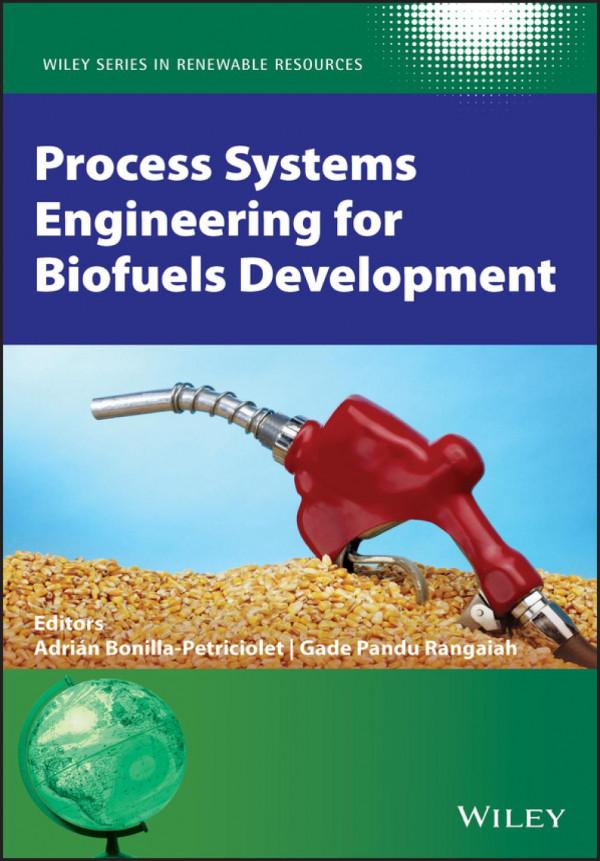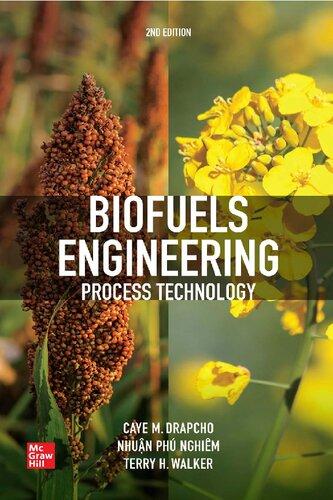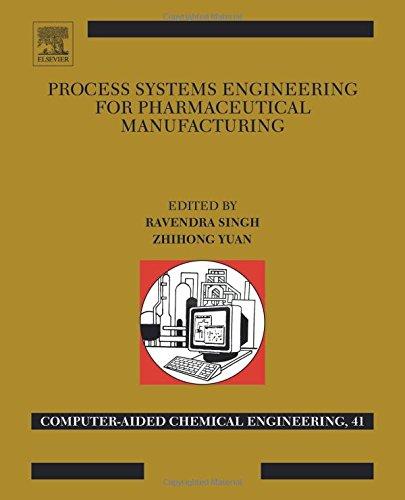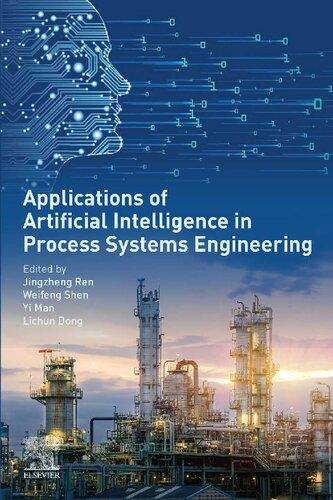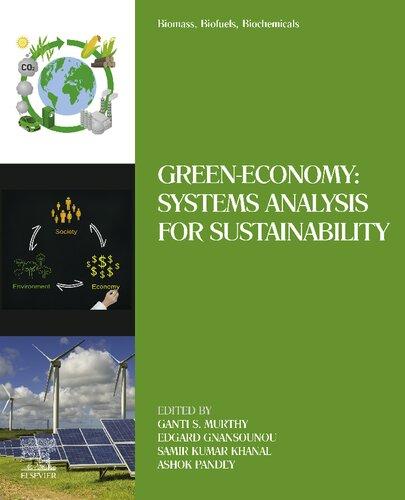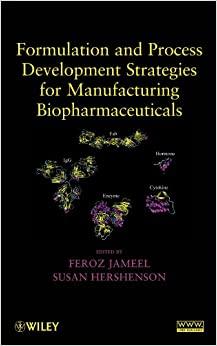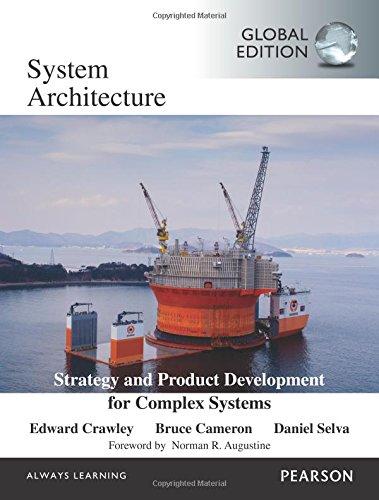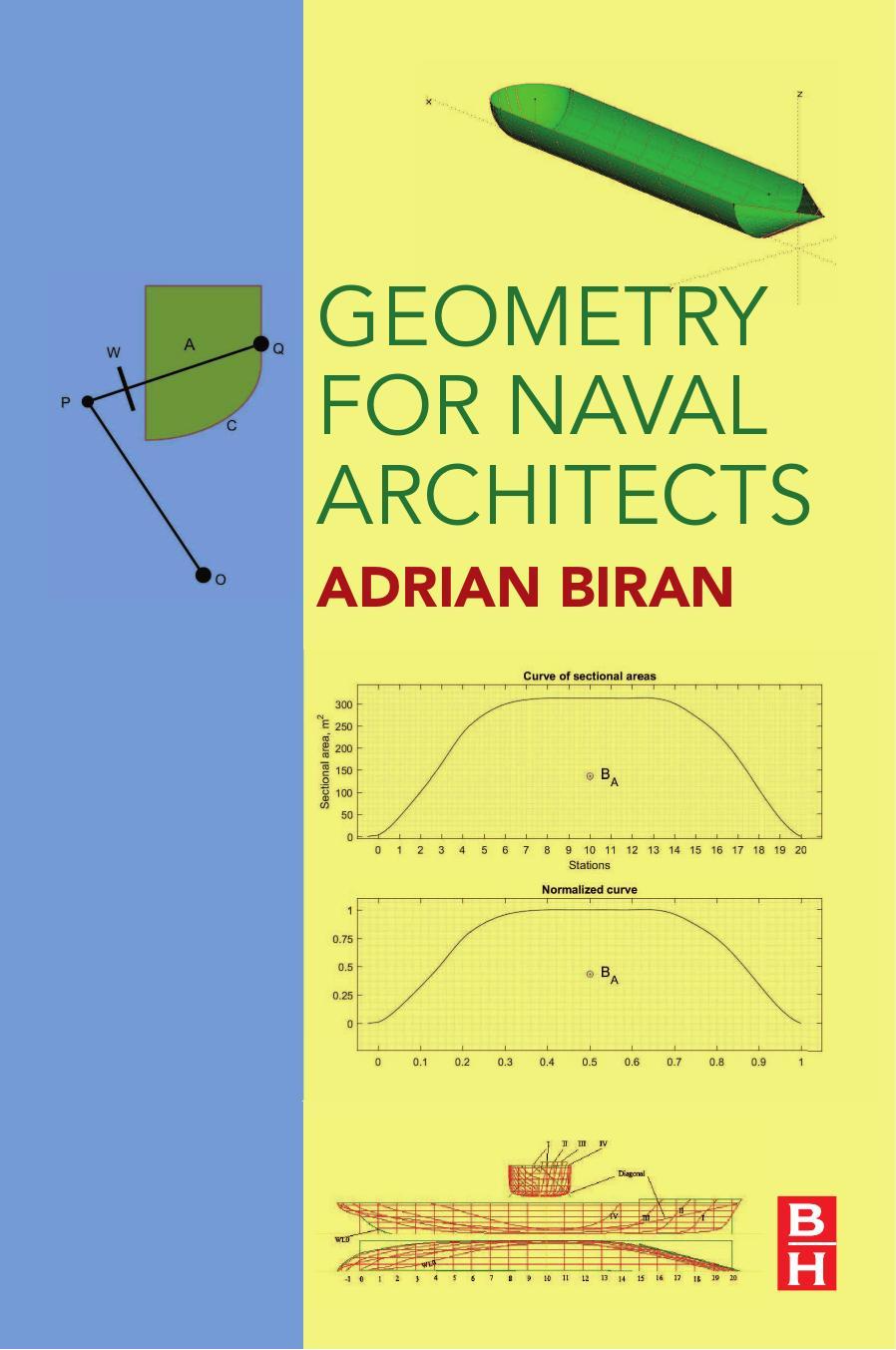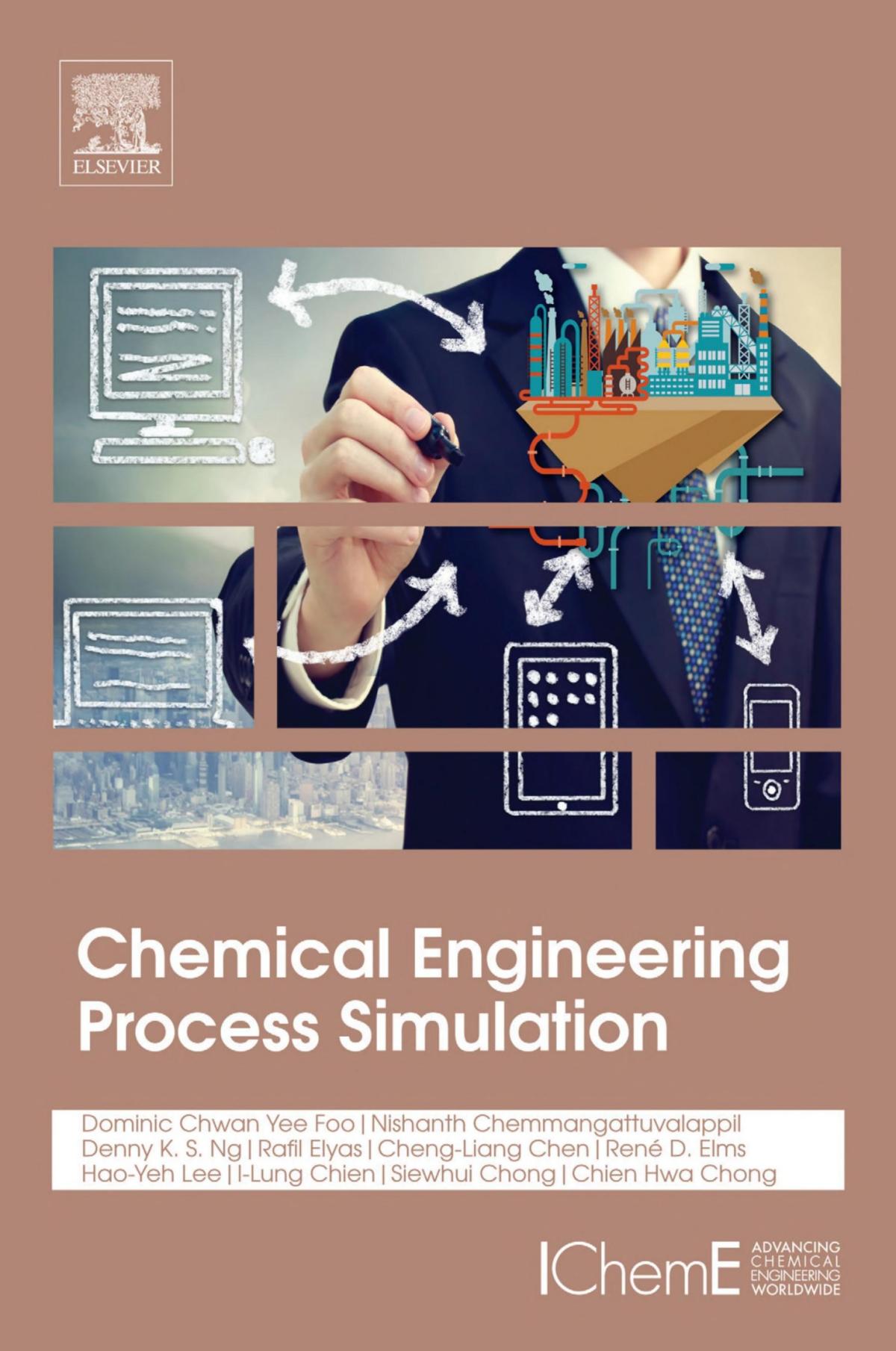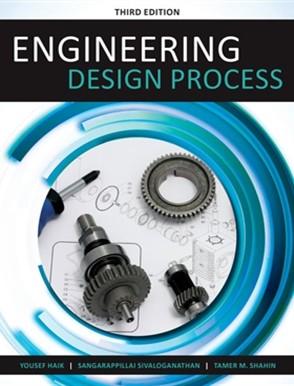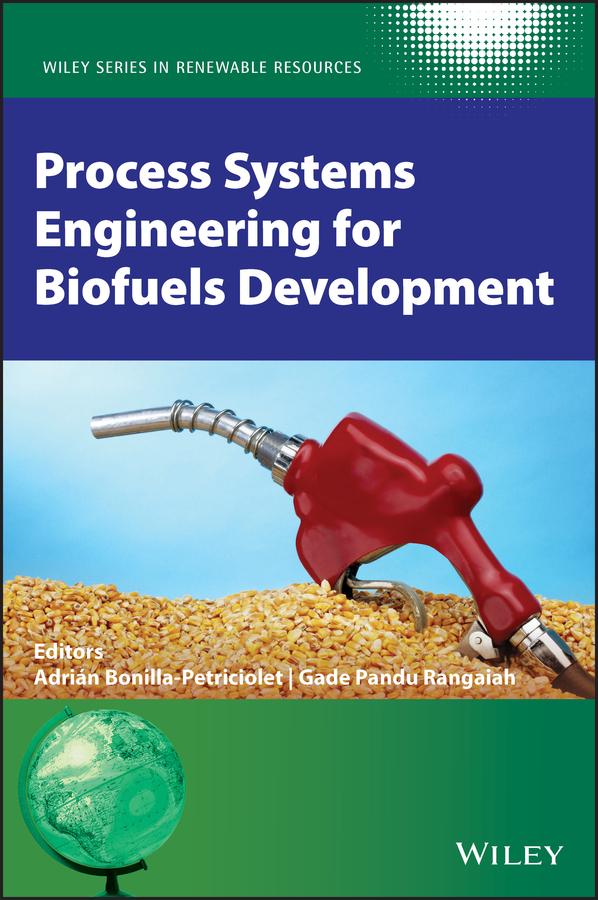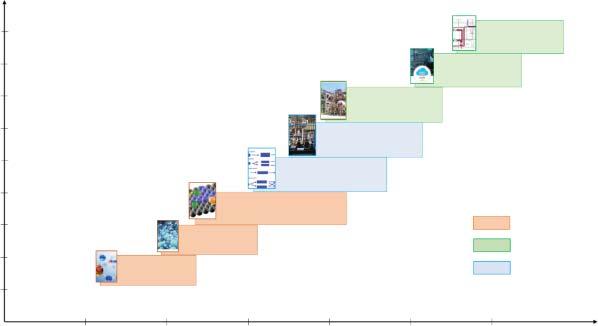Visit to download the full and correct content document: https://ebookmass.com/product/process-systems-engineering-for-biofuels-developme nt-adrian-bonilla-petriciolet/
More products digital (pdf, epub, mobi) instant download maybe you interests ...
Biofuels engineering process technology 2nd Edition
Caye M. Drapcho
https://ebookmass.com/product/biofuels-engineering-processtechnology-2nd-edition-caye-m-drapcho/ Process Systems Engineering for Pharmaceutical Manufacturing 1st Edition Ravendra Singh
https://ebookmass.com/product/process-systems-engineering-forpharmaceutical-manufacturing-1st-edition-ravendra-singh/
Applications of Artificial Intelligence in Process Systems Engineering Jingzheng Ren
https://ebookmass.com/product/applications-of-artificialintelligence-in-process-systems-engineering-jingzheng-ren/
Biomass, Biofuels, Biochemicals: Green-Economy: Systems Analysis for Sustainability Ganti S. Murthy
https://ebookmass.com/product/biomass-biofuels-biochemicalsgreen-economy-systems-analysis-for-sustainability-ganti-s-murthy/
Formulation and Process Development Strategies for Manufacturing Biopharmaceuticals
https://ebookmass.com/product/formulation-and-processdevelopment-strategies-for-manufacturing-biopharmaceuticals/
Systems Architecture. Strategy and product development for complex systems Bruce Cameron
https://ebookmass.com/product/systems-architecture-strategy-andproduct-development-for-complex-systems-bruce-cameron/
Geometry for Naval Architects Adrian Biran
https://ebookmass.com/product/geometry-for-naval-architectsadrian-biran/
Chemical Engineering Process Simulation 1st Edition Nishanth G. Chemmangattuvalappil
https://ebookmass.com/product/chemical-engineering-processsimulation-1st-edition-nishanth-g-chemmangattuvalappil/ (Original PDF) Engineering Design Process, 3rd Edition
https://ebookmass.com/product/original-pdf-engineering-designprocess-3rd-edition/
ProcessSystems EngineeringforBiofuels Development SeriesEditor:
WileySeries in RenewableResources ChristianV.Stevens,FacultyofBioscienceEngineering,GhentUniversity,Belgium
TitlesintheSeries:
WoodModification:Chemical,ThermalandOtherProcesses
CallumA.S.Hill
Renewables-BasedTechnology:SustainabilityAssessment
JoDewulf,HermanVanLangenhove
Biofuels
WimSoetaert,ErikVandamme
HandbookofNaturalColorants
ThomasBechtold,RitaMussak
SurfactantsfromRenewableResources
MikaelKjellin,IngegärdJohansson
IndustrialApplicationsofNaturalFibres:Structure,PropertiesandTechnicalApplications JörgMüssig
ThermochemicalProcessingofBiomass:ConversionintoFuels,ChemicalsandPower
RobertC.Brown
BiorefineryCo-Products:Phytochemicals,PrimaryMetabolitesandValue-AddedBiomass Processing
ChantalBergeron,DanielleJulieCarrier,ShriRamaswamy
AqueousPretreatmentofPlantBiomassforBiologicalandChemicalConversiontoFuelsand Chemicals
CharlesE.Wyman
Bio-BasedPlastics:MaterialsandApplications
StephanKabasci
IntroductiontoWoodandNaturalFiberComposites
DouglasD.Stokke,QinglinWu,GuangpingHan
CellulosicEnergyCroppingSystems
DouglasL.Karlen
IntroductiontoChemicalsfromBiomass,2ndEdition
JamesH.Clark,FabienDeswarte
LigninandLignansasRenewableRawMaterials:Chemistry,TechnologyandApplications FranciscoG.Calvo-Flores,JoseA.Dobado,JoaquínIsac-García,FranciscoJ.Martin-Martínez
SustainabilityAssessmentofRenewables-BasedProducts:MethodsandCaseStudies JoDewulf,StevenDeMeester,RodrigoA.F.Alvarenga
CelluloseNanocrystals:Properties,ProductionandApplications
WadoodHamad
Fuels,ChemicalsandMaterialsfromtheOceansandAquaticSources
FrancescaM.Kerton,NingYan
Bio-BasedSolvents
FrançoisJérômeandRafaelLuque
NanoporousCatalystsforBiomassConversion Feng-ShouXiaoandLiangWang
ThermochemicalProcessingofBiomass:ConversionintoFuels,ChemicalsandPower,2nd Edition
RobertC.Brown
TheChemicalBiologyofPlantBiostimulants
DannyGeelen,LinXu
ChitinandChitosan:PropertiesandApplications
LambertusA.M.vandenBroekandCarmenG.Boeriu
BiorefineryofInorganics:RecoveringMineralNutrientsfromBiomassandOrganicWaste
ErikMeers,EviMichels,ReneRietra,GerardVelthof
ProcessSystemsEngineeringforBiofuelsDevelopment AdriánBonilla-Petriciolet,GadePanduRangaiah
ForthcomingTitles:
WasteValorization:WasteStreamsinaCircularEconomy
CarolSzeKiLin,ChongLi,GuneetKaur,XiaofengYang
BiobasedPackaging:Material,EnvironmentalandEconomicAspects
MohdSapuanSalit,RushdanAhmadIlyas
High-PerformanceMaterialsfromBio-basedFeedstocks
AndrewJ.Hunt,NontipaSupanchaiyamat,KaewtaJetsrisuparb,JesperT.N.Knijnenburg
ProcessSystems EngineeringforBiofuels Development Editedby
ADRIÁNBONILLA-PETRICIOLET InstitutoTecnológicodeAguascalientes,México
GADEPANDURANGAIAH
NationalUniversityofSingapore,Singapore and VelloreInstituteofTechnology,India
Thiseditionfirstpublished2020 ©2020JohnWiley&SonsLtd.
Allrightsreserved.Nopartofthispublicationmaybereproduced,storedinaretrievalsystem,ortransmitted,inany formorbyanymeans,electronic,mechanical,photocopying,recordingorotherwise,exceptaspermittedbylaw.Advice onhowtoobtainpermissiontoreusematerialfromthistitleisavailableat http://www.wiley.com/go/permissions.
TherightofAdriánBonilla-PetricioletandGadePanduRangaiahtobeidentifiedastheauthorsoftheeditorialmaterial inthisworkhasbeenassertedinaccordancewithlaw.
RegisteredOffices
JohnWiley&Sons,Inc.,111RiverStreet,Hoboken,NJ07030,USA
JohnWiley&SonsLtd,TheAtrium,SouthernGate,Chichester,WestSussex,PO198SQ,UK
EditorialOffice
TheAtrium,SouthernGate,Chichester,WestSussex,PO198SQ,UK
Fordetailsofourglobaleditorialoffices,customerservices,andmoreinformationaboutWileyproductsvisitusat www.wiley.com
Wileyalsopublishesitsbooksinavarietyofelectronicformatsandbyprint-on-demand.Somecontentthatappearsin standardprintversionsofthisbookmaynotbeavailableinotherformats.
LimitofLiability/DisclaimerofWarranty
Inviewofongoingresearch,equipmentmodifications,changesingovernmentalregulations,andtheconstantflowof informationrelatingtotheuseofexperimentalreagents,equipment,anddevices,thereaderisurgedtoreviewand evaluatetheinformationprovidedinthepackageinsertorinstructionsforeachchemical,pieceofequipment,reagent, ordevicefor,amongotherthings,anychangesintheinstructionsorindicationofusageandforaddedwarningsand precautions.Whilethepublisherandauthorshaveusedtheirbesteffortsinpreparingthiswork,theymakeno representationsorwarrantieswithrespecttotheaccuracyorcompletenessofthecontentsofthisworkandspecifically disclaimallwarranties,includingwithoutlimitationanyimpliedwarrantiesofmerchantabilityorfitnessforaparticular purpose.Nowarrantymaybecreatedorextendedbysalesrepresentatives,writtensalesmaterialsorpromotional statementsforthiswork.Thefactthatanorganization,website,orproductisreferredtointhisworkasacitationand/or potentialsourceoffurtherinformationdoesnotmeanthatthepublisherandauthorsendorsetheinformationorservices theorganization,website,orproductmayprovideorrecommendationsitmaymake.Thisworkissoldwiththe understandingthatthepublisherisnotengagedinrenderingprofessionalservices.Theadviceandstrategiescontained hereinmaynotbesuitableforyoursituation.Youshouldconsultwithaspecialistwhereappropriate.Further,readers shouldbeawarethatwebsiteslistedinthisworkmayhavechangedordisappearedbetweenwhenthisworkwaswritten andwhenitisread.Neitherthepublishernorauthorsshallbeliableforanylossofprofitoranyothercommercial damages,includingbutnotlimitedtospecial,incidental,consequential,orotherdamages.
LibraryofCongressCataloging-in-PublicationData
Names:Bonilla-Petriciolet,Adrián,editor.|Rangaiah,GadePandu,editor.
Title:Processsystemsengineeringforbiofuelsdevelopment/editedby AdriánBonilla-Petriciolet,Dept.ChemicalEngineering,Instituto TecnológicodeAguascalientes,Aguascalientes,México,GadePanduRangaiah, NationalUniversityofSingapore,Singapore.
Description:Firstedition.|Hoboken,NJ:JohnWiley&Sons,Inc.,[2020] |Series:Wileyseriesinrenewableresources|Includesbibliographicalreferencesandindex. Identifiers:LCCN2020016306(print)|LCCN2020016307(ebook)|ISBN 9781119580270(cloth)|ISBN9781119580317(adobepdf)|ISBN 9781119580331(epub)
Subjects:LCSH:Biomassenergy.|Chemicalprocesses.|Systemsengineering. Classification:LCCTP339.P7532020(print)|LCCTP339(ebook)|DDC 662/.88–dc23
LCrecordavailableathttps://lccn.loc.gov/2020016306
LCebookrecordavailableathttps://lccn.loc.gov/2020016307
CoverDesign:Wiley
CoverImage:©JimBarber/Shutterstock
Setin10/12pt,TimesLTStdbySPiGlobal,Chennai,India.
PrintedandboundbyCPIGroup(UK)Ltd,Croydon,CR04YY 10987654321
1Introduction1
AdriánBonilla-PetricioletandGadePanduRangaiah
1.1ImportanceofBiofuelsandOverviewoftheirProduction1
1.2SignificanceofProcessSystemsEngineeringforBiofuels Production3
1.2.1ModelingofPhysicochemicalPropertiesof ThermodynamicSystemsRelatedtoBiofuels4
1.2.2IntensificationoftheBiomassTransformationRoutesfor theProductionofBiofuels5
1.2.3Computer-AidedMethodologiesforProcessModeling, Design,Optimization,andControlIncludingSupplyChain andLifeCycleAnalyses7
1.3OverviewofthisBook9 References11
2WasteBiomassSuitableasFeedstockforBiofuelsProduction15 MariaPapadaki
2.1Introduction15
2.1.1TheNeedforBiofuels15
2.1.2ProblemDefinition17
2.1.3TheBiomassPool18
2.2KindsofFeedstock20
2.2.1SpentCoffeeGrounds21
2.2.2LignocelluloseBiomass22
2.2.3Palm,Olive,Coconut,Avocado,andArganOilProduction Residues25
2.2.4Citrus33
2.2.5GrapeMarc36
2.2.6WasteOilandCookingOil37
2.2.7AdditionalSources38
2.3Conclusions40 Acknowledgment40 References40
3MultiscaleAnalysisfortheExploitationofBioresources:FromReactor DesigntoSupplyChainAnalysis49 AntonioSánchez,BorjaHernández,andMarianoMartín
3.1Introduction49
3.2UnitLevel50
3.2.1ShortCutMethods50
3.2.2MechanisticModels51
3.2.3RulesofThumb56
3.2.4DimensionlessAnalysis56
3.2.5SurrogateModels56
3.2.6ExperimentalCorrelations59
3.3ProcessSynthesis60
3.3.1HeuristicBased60
3.3.2SupestructureOptimization61
3.3.3EnvironmentalImpactMetrics65
3.3.4SafetyConsiderations66
3.4TheProductDesignProblem66
3.4.1ProductDesign:EngineeringBiomass66
3.4.2BlendingProblems68
3.5SupplyChainLevel68
3.5.1Introduction68
3.5.2ModelingIssues70
3.6MultiscaleLinksandConsiderations71 Acknowledgment74 Nomenclature74 References75
4ChallengesintheModelingofThermodynamicPropertiesandPhase EquilibriumCalculationsforBiofuelsProcessDesign85 RoumianaP.StatevaandGeorgiSt.Cholakov
4.1Introduction85
4.2ThermodynamicModelingFramework:Elements,Structure, andOrganization86
4.3ThermodynamicsofBiofuelSystems88
4.3.1PhaseEquilibria88
4.3.2ThermodynamicModels90
4.4SourcesofDataforBiofuelsProcessDesign98
4.5MethodsforPredictingDataforBiofuelsProcessDesign102
4.5.1GroupContributionMethodsforBiofuelsProcessDesign103
4.5.2QuantitativeStructure–PropertyRelationshipsforBiofuels ProcessDesign105
4.6ChallengesfortheBiofuelsProcessDesignMethods109
4.7InfluenceofUncertaintiesinThermophysicalPropertiesofPure CompoundsonthePhaseBehaviorofBiofuelSystems112 4.8Conclusions114
Acknowledgment114 Exercises114 References115
5Up-gradingofWasteOil:AKeyStepintheFutureofBiofuel Production121
LuigidiBitontoandCarloPastore
5.1Introduction121
5.2PhysicochemicalPretreatmentsofWasteOils:Removalof Contaminants124
5.3DirectTreatmentandConversionofFFAsintoMethylEsters125
5.3.1HomogeneousCatalysis:BrønstedandLewis Acids125
5.3.2HeterogeneousCatalysis127
5.3.3EnzymaticBiodieselProduction128
5.3.4ILsBiodieselProduction130
5.3.5UseofMetalHydratedSalts133
5.4FutureTrendsofthePretreatmentsofWasteOils139
5.5Conclusions140
Acknowledgment141 Abbreviations141 References142
6ProductionofBiojetFuelfromWasteRawMaterials:AReview149 AnaLauraMoreno-Gómez,ClaudiaGutiérrez-Antonio,FernandoIsrael Gómez-Castro,andSalvadorHernández
6.1Introduction149
6.2WasteTriglycerideFeedstock150
6.3WasteLignocellulosicFeedstock159
6.4WasteSugarandStarchyFeedstock164
6.5MainChallengesandFutureTrends165
6.6Conclusions167 Acknowledgments167 References167
7Computer-AidedDesignforGeneticModulationtoImproveBiofuel Production173 Feng-ShengWangandWu-HsiungWu
7.1Introduction173
7.2Method175
7.2.1FluxBalanceAnalysis175
7.2.2FluxVariabilityAnalysis176
7.2.3MinimizationofMetabolicAdjustment176
7.2.4RegulatoryOn-OffMinimization177
7.2.5OptimalStrainDesignProblem177
7.3Computer-AidedStrainDesignTool179 7.4Examples181
7.4.1E.coliCoreModel181
7.4.2Genome-ScaleMetabolicModelofE.coliiAF1260183
7.5Conclusions185
Appendix7.A:TheSBPProgram187 References187
8ImplementationofBiodieselProductionProcessUsing Enzyme-CatalyzedRoutes191 ThallesAllanAndrade,MassimilianoErrico,andKnudVillyChristensen 8.1Introduction191
8.2BiodieselProductionRoutes:ChemicalversusEnzymaticCatalysts194
8.2.1ChemicalCatalysts195
8.2.2EnzymaticCatalysts196
8.3OptimalReactionConditionsandKineticModeling198
8.3.1EvaluationoftheReactionConditions199
8.3.2KineticModeling201
8.4ProcessSimulationandEconomicEvaluation205
8.5ReuseofEnzymefortheTransesterificationReaction210
8.5.1RecoveryofEversaTransformbyMeansofCentrifugation210
8.5.2RecoveryofEversaTransformbyMeansofCeramic Membranes211
8.6EnvironmentalImpactandFinalRemarks215 Acknowledgments217 Nomenclature217 References217
9ProcessAnalysisofBiodieselProduction–KineticModeling, Simulation,andProcessDesign221
BrunaRicettiMargarida,WandersonRogerioGiacomin-Junior, LuizFernandodeLimaLuzJunior,FernandoAugustoPedersenVoll, andMarcosLucioCorazza
9.1Introduction221
9.1.1Homogeneous-BasedReactions222
9.1.2Heterogeneous-BasedReactions223
9.1.3Enzyme-CatalyzedReactions224
9.1.4SupercriticalRouteReactions224
9.1.5MethanolorEthanolforBiodieselSynthesis224
9.2GettingStartedwithAspenPlusV10224
9.2.1PureCompounds225
9.2.2MixtureParameters229
9.3KineticStudy232
9.3.1EsterificationReaction232
9.3.2ExperimentalReactionDataRegression234
9.3.3TransesterificationReaction236
9.3.4SupercriticalRoute238
9.4ProcessDesign239
9.4.1EsterificationReaction239
9.4.2MethanolRecycling243
9.4.3TransesterificationReaction244
9.4.4BiodieselPurification245
9.4.5AdditionalResources248
9.5EnergyandEconomicAnalysis252 9.6ConcludingRemarks254 Acknowledgment255 Exercises255 References256
10ProcessDevelopment,DesignandAnalysisofMicroalgalBiodiesel ProductionAidedbyMicrowaveandUltrasonication259 DipeshS.Patle,SavyasachiShrikhande,andGadePanduRangaiah 10.1Introduction259 10.2ProcessDevelopmentandModeling262 10.3SizingandCostAnalysis272 10.4ComparisonwiththeWCO-BasedProcessoftheSameCapacity277 10.4.1BiodieselProcessUsingWCOasRawMaterial277 10.4.2ComparativeAnalysis277 10.5ComparisonwiththeMicroalgae-BasedProcesses280 10.6Conclusions280 Acknowledgment281 Appendix10.A281 Exercises282 References282
11ThermochemicalProcessesfortheTransformationofBiomassinto Biofuels285 CarlosJ.Durán-Valle 11.1Introduction285 11.2BiomassandBiofuels288 11.3Combustion289 11.4Gasification290
11.4.1FixedBedGasification291
11.4.2FluidizedBedGasification292
11.4.3DualFluidizedBedGasification292
11.4.4HydrothermalGasification293
11.4.5SupercriticalWaterGasification294
11.4.6PlasmaGasification294
11.4.7CatalyzedGasification295
11.4.8Fischer–TropschSynthesis295
11.5Liquefaction296 11.6Pyrolysis296
11.6.1SlowPyrolysis297
11.6.2FastPyrolysis297
11.6.3FlashPyrolysis297
11.6.4CatalyticBiomassPyrolysis303
11.6.5MicrowaveHeating304
11.6.6ProductSeparation304 11.7Carbonization305
11.8Conclusions308 Acknowledgments309 References309
12IntensifiedPurificationAlternativeforMethylEthylKetone Production:Economic,Environmental,SafetyandControlIssues311
EduardoSánchez-Ramírez,JuanJoséQuiroz-Ramírez,and JuanGabrielSegovia-Hernández
12.1Introduction311
12.2ProblemStatementandCaseStudy316
12.3EvaluationIndexesandOptimizationProblem317
12.3.1TotalAnnualCostCalculation319
12.3.2EnvironmentalIndexCalculation319
12.3.3IndividualRiskIndex320
12.3.4ControllabilityIndexCalculation322
12.3.5Multi-ObjectiveOptimizationProblem323 12.4GlobalOptimizationMethodology324 12.5Results325 12.6Conclusions335 Acknowledgments335 Notation335 References336
13PresentandFutureofBiofuels341
JuanGabrielSegovia-Hernández,CésarRamírez-Márquez,and EduardoSánchez-Ramírez
13.1Introduction341
13.2SomeRepresentativeBiofuels344 13.2.1Bioethanol344 13.2.2Biodiesel347 13.2.3Biobutanol348 13.2.4BiojetFuel349 13.2.5Biogas351 13.3PerspectivesandFutureofBiofuels352 References354
Index 357
ListofContributors ThallesAllanAndrade DepartmentofChemicalEngineering,Biotechnologyand EnvironmentalTechnology,UniversityofSouthernDenmark,OdenseM,Denmark
LuigidiBitonto IstitutodiRicercaSulleAcque(IRSA),ConsiglioNazionaledelle Ricerche(CNR),Bari,Italy
AdriánBonilla-Petriciolet InstitutoTecnológicodeAguascalientes,Aguascalientes, Mexico
GeorgiSt.Cholakov DepartmentofOrganicSynthesisandFuels,Universityof ChemicalTechnologyandMetallurgy,Sofia,Bulgaria
KnudVillyChristensen DepartmentofChemicalEngineering,Biotechnologyand EnvironmentalTechnology,UniversityofSouthernDenmark,OdenseM,Denmark
MarcosLucioCorazza DepartmentofChemicalEngineering,FederalUniversityof Paraná,PolytechnicCenter(DEQ/UFPR),Curitiba,Brazil
CarlosJ.Durán-Valle DepartamentodeQuímicaOrgánicaeInorgánica,Universidad deExtremadura,Badajoz,Spain
MassimilianoErrico DepartmentofChemicalEngineering,Biotechnologyand EnvironmentalTechnology,UniversityofSouthernDenmark,OdenseM,Denmark
WandersonRogerioGiacomin-Junior DepartmentofChemicalEngineering,Federal UniversityofParaná,PolytechnicCenter(DEQ/UFPR),Curitiba,Brazil
FernandoIsraelGómez-Castro DepartamentodeIngenieríaQuímica,Universidadde Guanajuato,Guanajuato,Guanajuato,México
ClaudiaGutiérrez-Antonio FacultaddeQuímica,UniversidadAutónomadeQuerétaro, Querétaro,Querétaro,México
BorjaHernández DepartmentofChemicalEngineering,UniversityofSalamanca, Salamanca,Spain
SalvadorHernández DepartamentodeIngenieríaQuímica,UniversidaddeGuanajuato, Guanajuato,Guanajuato,México
LuizFernandodeLimaLuzJunior DepartmentofChemicalEngineering,Federal UniversityofParaná,PolytechnicCenter(DEQ/UFPR),Curitiba,Brazil
MarianoMartín DepartmentofChemicalEngineering,UniversityofSalamanca, Salamanca,Spain
AnaLauraMoreno-Gómez FacultaddeQuímica,UniversidadAutónomadeQuerétaro, Querétaro,Querétaro,México
MariaPapadaki DepartmentofEnvironmentalEngineering,UniversityofPatras, Agrinio,Greece
CarloPastore IstitutodiRicercaSulleAcque(IRSA),ConsiglioNazionaledelle Ricerche(CNR),Bari,Italy
DipeshS.Patle ChemicalEngineeringDepartment,MotilalNehruNationalInstituteof Technology,Allahabad,India
FernandoAugustoPedersenVoll DepartmentofChemicalEngineering,Federal UniversityofParaná,PolytechnicCenter(DEQ/UFPR),Curitiba,Brazil
JuanJoséQuiroz-Ramírez CONACyT–CIATECA.C.CentrodeInnovaciónAplicada enTecnologíasCompetitivas,León,México
BrunaRicettiMargarida DepartmentofChemicalEngineering,FederalUniversityof Paraná,PolytechnicCenter(DEQ/UFPR),Curitiba,Brazil
CésarRamírez-Márquez DepartamentodeIngenieríaQuímica,Universidadde Guanajuato,Guanajuato,México
GadePanduRangaiah DepartmentofChemicalandBiomolecularEngineering, NationalUniversityofSingapore,SingaporeandSchoolofChemicalEngineering,Vellore InstituteofTechnology,Vellore,India
AntonioSánchez DepartmentofChemicalEngineering,UniversityofSalamanca, Salamanca,Spain
EduardoSánchez-Ramírez DepartamentodeIngenieríaQuímica,Universidadde Guanajuato,Guanajuato,México
JuanGabrielSegovia-Hernández DepartamentodeIngenieríaQuímica,Universidad deGuanajuato,Guanajuato,México
SavyasachiShrikhande SchoolofChemicalEngineering,VIT,Vellore,India
RoumianaP.Stateva InstituteofChemicalEngineering,BulgarianAcademyof Sciences,Sofia,Bulgaria
Feng-ShengWang DepartmentofChemicalEngineering,NationalChungCheng University,Chiya,Taiwan
Wu-HsiungWu DepartmentofChemicalEngineering,NationalChungCheng University,Chiya,Taiwan
SeriesPreface Renewableresources,theiruseandmodificationareinvolvedinamultitudeofimportant processeswithamajorinfluenceonoureverydaylives.Applicationscanbefoundinthe energysector;paintsandcoatings;andthechemical,pharmaceutical,andtextileindustry, tonamebutafew.
Theareainterconnectsseveralscientificdisciplines(agriculture,biochemistry,chemistry,technology,environmentalsciences,forestry),whichmakesitverydifficulttohave anexpertviewonthecomplicatedinteraction.Therefore,theideatocreateaseriesofscientificbooks,focusingonspecifictopicsconcerningrenewableresources,hasbeenvery opportuneandcanhelptoclarifysomeoftheunderlyingconnectionsinthisarea.
Inaveryfast-changingworld,trendsarenotonlycharacteristicoffashionandpoliticalstandpoints;sciencetooisnotfreefromhypesandbuzzwords.Theuseofrenewable resourcesisagainmoreimportantnowadays;however,itisnotpartofahypeorafashion. Asthelivelydiscussionsamongscientistscontinueabouthowmanyyearswewillstillbe abletousefossilfuels–opinionsrangingfrom50to500years–theydoagreethatthe reserveislimited,andthatitisessentialnotonlytosearchfornewenergycarriersbutalso fornewmaterialsources.
Inthisrespect,thefieldofrenewableresourcesisacrucialareainthesearchforalternativesforfossil-basedrawmaterialsandenergy.Inthefieldofenergysupply,biomass-and renewables-basedresourceswillbepartofthesolutionalongsideotheralternativessuchas solarenergy,windenergy,hydraulicpower,hydrogentechnologyandnuclearenergy.Inthe fieldofmaterialsciences,theimpactofrenewableresourceswillprobablybeevenbigger. Integralutilizationofcropsandtheuseofwastestreamsincertainindustrieswillgrowin importance,leadingtoamoresustainablewayofproducingmaterials.Althoughoursocietywasmuchmore(almostexclusively)basedonrenewableresourcescenturiesago,this disappearedintheWesternworldinthenineteenthcentury.Nowitistimetofocusagain onthisfieldofresearch.However,itshouldnotmeana“retouràlanature,”butshouldbe amultidisciplinaryeffortonahighlytechnologicalleveltoperformresearchtowardnew opportunities,todevelopnewcropsandproductsfromrenewableresources.Thiswillbe essentialtoguaranteeanacceptablelevelofcomfortforthegrowingnumberofpeoplelivingonourplanet.Itis“the”challengeforthecominggenerationsofscientiststodevelop moresustainablewaystocreateprosperityandtofightpovertyandhungerintheworld.A globalapproachiscertainlyfavored.
Thischallengecanonlybedealtwithifscientistsareattractedtothisareaandarerecognizedfortheireffortsinthisinterdisciplinaryfield.Itis,therefore,alsoessentialthat consumersrecognizethefateofrenewableresourcesinanumberofproducts.Furthermore,scientistsdoneedtocommunicateanddiscusstherelevanceoftheirwork.Theuse andmodificationofrenewableresourcesmaynotfollowthepathofthegeneticengineering conceptinviewofconsumeracceptanceinEurope.Relatedtothisaspect,theserieswill certainlyhelptoincreasethevisibilityoftheimportanceofrenewableresources.Being convincedofthevalueoftherenewablesapproachfortheindustrialworld,aswellasfor developingcountries,Iwasmyselfdelightedtocollaborateonthisseriesofbooksfocusing onthedifferentaspectsofrenewableresources.Ihopethatreadersbecomeawareofthe complexity,theinteractionandinterconnections,andthechallengesofthisfield,andthat theywillhelptocommunicateontheimportanceofrenewableresources.
IcertainlywanttothankthepeopleofWiley’sChichesteroffice,especiallyDavid Hughes,JennyCosshamandLynRoberts,inseeingtheneedforsuchaseriesofbookson renewableresources,forinitiatingandsupportingit,andforhelpingtocarrytheprojectto theend.
Last,butnotleast,Iwanttothankmyfamily,especiallymywifeHildeandchildren PaulienandPieter-Jan,fortheirpatience,andforgivingmethetimetoworkontheseries whenotheractivitiesseemedtobemoreinviting.
ChristianV.Stevens, FacultyofBioscienceEngineeringGhentUniversity,Belgium SeriesEditor,“RenewableResources” June2005
Preface Biofuels(e.g.biodiesel,bioalcohols,andbiojetfuel)arealternativeenergysolutionstothe environmentalandsafetyproblemsrelatedtotheuseofpetroleum-basedfuels.Thisrenewableenergycanbegeneratedfromawidevarietyoflow-costfeedstocksandtransformation routesthatalsoimplyaspectrumofprocessunitsbasedondifferenttechnologies.During thepasttwodecades,significantdevelopmentsandimprovementshavebeenachievedto increasethecommercialproductionofbiofuelsworldwide.However,thecreationandoperationofsustainablebiofuelproductionchainshaveimposednewchallengestothefieldof ProcessSystemsEngineering(PSE).Theanalysis,modeling,design,optimization,intensification,andcontrolofindividualunits(e.g.reactorsandseparators)andtheentirefacilities toproducebiofuelshavegenerateddriversforPSEresearchanddevelopment,whichshould beaddressedviatheoretical,computational,andexperimentalstudies.
ThePSEofbiofuelproductionschemesdemandsadvancesandnovelcontributions tohandlethechallengesassociatedwiththediversityofphysicochemicalpropertiesof availablefeedstocks,biofuelprocessingroutes,operatingconditions,andcharacteristics oftechnologiesappliedinpretreatmentunits,reactors,separators,andotherprocess equipment.TheopportunitiesofPSEintheproductionofrenewablebiofuelsinclude (i)developmentofareliablethermodynamicframeworkforestimatingtheproperties ofpurecomponentsandmixturesthatarerequiredinthedesign,control,andintensificationofbiomasstransformationroutes;(ii)intensificationandoptimizationofthe processingroutestohandleawidevarietyoffeedstocksforobtainingbiofuelsandother high-value-addedby-products;(iii)implementationofrealisticandpropermodelsforPSE analysis;(iv)applicationofreliableglobalandmultiobjectiveoptimizationtechniquesfor solvingdesignproblemsandimprovingtheperformanceofbiofuelproductionschemes; and(v)utilizationofcomputer-aidedmethodologiesforprocesscontrollability,mass andenergyintegration,andothertasksassociatedwithPSE.Therefore,theoretical, computational,andexperimentalstudiesintheseandothertopicsarerequiredtodevelop asustainablebiofuelproductionchain.
ThepresentbookisthefirstonespecificallydevotedtoPSEfortheproductionofbiofuels.Itcoversawiderangeoftopicsassociatedwiththeprocessengineeringofbiofuel productionincludingthethermodynamicmodeling,processdesignandcontrol,reaction engineering,separation,andpurificationofbiofuelsobtainedfromdifferentbiomassfeedstocksandtransformationroutes.Inall,thisbookcontains13chaptersdevotedtoPSE
forbiofuelproduction.Itprovidesanoverviewofthesubjectandcoverstheportfolioof availablebiomassfeedstocksforbiofuelproduction,multiscaleanalysisofbioresources, challengesinmodelingthermodynamicpropertiesandphaseequilibriumcalculations,the productionandseparationofbiofuels,computer-aideddesign,enzyme-catalyzedbiodiesel production,processanalysisofbiodieselproduction(includingkineticmodelingandsimulation),andtheuseofultrasonificationinbiodieselproduction,aswellasthermochemical processesforbiomasstransformationandproductionofalternativebiofuels.ItisacollectionofcontributionsfromleadingresearchersinPSEandbiofuels.Everychapterinthis bookhasbeenreviewedanonymouslybyatleasttwoexpertsandthenthoroughlyrevisedby therespectivecontributors.Thisreviewprocesshasbeenattemptedtoprovidehigh-quality andeducationalvalueforallchapters.
Thisbookwillprovideresearchersandpostgraduatestudentswithanoverviewofthe recentdevelopmentsandapplicationsofsomestate-of-the-arttechnologiesandPSEforbiofuelproduction.Weconsiderthatthisbookisausefulresourceforresearchersinrenewable energiesandpractitionersworkingontheproductionofbiofuels.
Wearegratefultoallthecontributorsandreviewersofthechaptersfortheircooperation tomeettherequirementsandscheduletofinalizethisbook.Wewouldliketothankthe bookpublishingteamofJohnWiley&Sons,Ltd,fortheirsupportandassistanceduring thepreparationofthisbook.
AdriánBonilla-Petriciolet InstitutoTecnológicodeAguascalientes,México GadePanduRangaiah NationalUniversityofSingapore,Singapore June2020
Introduction AdriánBonilla-Petriciolet1 andGadePanduRangaiah2,3 1 InstitutoTecnológicodeAguascalientes,Aguascalientes20256,Mexico
2 DepartmentofChemicalandBiomolecularEngineering,NationalUniversityofSingapore,117585, Singapore
3 SchoolofChemicalEngineering,VelloreInstituteofTechnology,Vellore632014,India
1.1ImportanceofBiofuelsandOverviewoftheirProduction Therelevanceandimportanceofbiofuelsarerecognizedworldwide,mainlyduetothe problemscausedbyfossilfueldepletionandenvironmentalpollution(e.g.climatechange) arisingfromthegenerationandconsumptionoftraditionalenergysources(Lietal.2019; Raudetal.2019;Quiroz-Perezetal.2019).Biofuelsbelongtothecategoryofsustainable energythatcanbeobtainedfrombiological(e.g.anaerobicdigestionandfermentation), physicochemical(e.g.transesterification),andthermochemical(e.g.liquefaction,gasification,andpyrolysis)processingroutes,whichcaninvolvetheapplicationofconventional andintensifiedtechnologies(Gutierrez-Antonioetal.2017;Lietal.2019;Quiroz-Perez etal.2019).Severalresearchershaveconcludedthatbiomassescanberegardedasaprimarysourceforobtaininggreenandrenewableenergybecausetheyaredistributedand generatedworldwide(Lietal.2019;Quiroz-Perezetal.2019;Weietal.2019).Infact,it hasbeenestimatedthatthebiomass-basedfuelsourcescanaccountfor70%ofallrenewable energyproduction(Raudetal.2019).
Diverseprocesseshavebeenstudiedandimplementedtoperformthetransformationofbiomass-basedfeedstockstosolid,liquidand/orgaseousproductsthatcontain energy-enrichedchemicals(Quiroz-Perezetal.2019).Lignocellulosicmaterials,food crops,urbanwastes,animalfats,vegetableoils,starch-richcompoundsandnon-edible
ProcessSystemsEngineeringforBiofuelsDevelopment,FirstEdition. EditedbyAdriánBonilla-PetricioletandGadePanduRangaiah. ©2020JohnWiley&SonsLtd.Published2020byJohnWiley&SonsLtd.
Table1.1 Classificationofbiofuelsbasedonthebiomassfeedstockanditstransformationroute.
Typeofbiofuelsaccordingtotheirprocessingroutes PrimarySecondary
1stgeneration2ndgeneration3rdgeneration4thgeneration Firewood,wood, pellets,chips, forestand agricultural residues,gas.
Bioethanolor butanolfrom fermentationof starchorsugars containedinfood crops.
Bioethanol, biobutanolor synthesizedbiofuels madefrom non-food lignocellulosic biomass.
Source:Raudetal.2019.ReproducedwithpermissionofElsevier.
Biodieselor bioethanolfrom microalgae, seaweedor microorganisms.
Biofuelsproduced usinggenetically modified microalgaeor microorganisms.
biomasseslikealgaeandmicroorganisms(withandwithoutgeneticmodifications)can beutilizedasfeedstockstoproducerenewablefuels(SawangkeawandNgamprasertsith 2013;LomanandJu2016;StephenandPeriyasamy2018).Biofuelsincludeendproducts knownasbiodiesel(amixtureoflong-chainalkylesters),biojetfuel(amixtureofC8–C16 alkanes,iso-alkanes,naphthenicderivatives,andaromaticcompounds),biogasoline (C6–C12hydrocarbons),andbioalcohols(e.g.bioethanolandbiobutanol)(Hassanetal. 2015;Gutierrez-Antonioetal.2017;Weietal.2019).Table1.1showsacommonand simpleclassificationofbiofuelsbasedonthebiomassusedasthestartingmaterialandits processingroute(Raudetal.2019).
Theproductionofbiofuelscomprisesseveralprocessunitsthatshouldbeanalyzed,modeled,designed,optimized,intensified,andcontrolled.Ingeneral,conventionalprocesses employedinbiofuelsproductionrelyonunitoperationsthatareperformedindependently withoutmassand/orenergyintegration,whoseprocessconditionsarenotoptimizedandthe tradeoffbetweenprocessefficiencyandcostmaynotbethebest(Quiroz-Perezetal.2019). Ontheotherhand,intensifiedprocessoperationsoutperformtheirconventionalcounterpartsintermsofenergyconsumption,profitability,andeffectiveness.Processintensificationgenerallyreducestheequipmentnumber,sizesand/orenergyconsumption,toincrease theproductivityandtoenhanceotherperformancemetricsviathesynergyobtainedfrom multifunctionalphenomenaatdifferentspatialandtimescales(StankiewiczandMoulijn 2000;Tianetal.2018).Itallowstheintegrationoftwoormoreoperationsinmultitaskingunits,thedevelopmentofalternativeconfigurationsanddesignofprocessequipment, besidestheapplicationofoptimizationtoolsandreliableprocesssynthesismethodologies toimprovethepathwaysforobtainingbiofuels(Nasiretal.2013;Quiroz-Perezetal.2019).
SustainabledevelopmentofbiofuelssupplychainsfromthevarietyofavailablefeedstocksandprocessroutesimplynewchallengesforChemicalEngineering.Inparticular, therearekeyprocessdesignaspectsofbiofuelsproductiontobeimprovedandintensified (Nasiretal.2013;Ohetal.2018;Raudetal.2019).Theyincludethecollection(harvesting/productionorrecovery)ofthebiomass,feedstockpretreatment,biomasstransformation routes,end-productsseparationandpurification,andthecorrespondinglogistictasksthat arelinkedtotheelementsofthesupplychain.Allthesefactorsimpacttheeconomicfeasibilityofthespecificpathwaytoproducethebiofuel.Forinstance,someauthorshave highlightedthattheproductionof4thgenerationrenewablefuelscouldimplyexpensive
andenergyintensiveoperationsthuslimitingitscurrentcommercialization(Dardaetal. 2019).Theapplicationofsustainabletechnologiesineachprocessstageisparamountto reachthegoalofagreenandfeasiblelarge-scaleproductionofbioenergy.Intermsofprocessmodeling,thereisalsothenecessityofimprovingthethermodynamicframeworkand conceptualdesignapproachesemployedinthebiofuelsprocessengineering.
Itisclearthatbiofuelsproductioncreatesnewapplicationsforprocesssystemengineering(PSE)intermsofbiomassvalorization,greenchemistry,thermodynamics,catalysts, reactionengineering,separationunits,processmodeling,optimization,design,andcontrol.Althoughseveraldevelopmentshavebeenachievedinthisdirection,therearestill technicallimitationsandbarrierstobeovercomewiththeobjectiveofminimizingcosts andenergyrequirementsofcommercialbiofuelsproductionfacilitiesutilizingaffordable feedstocksandconsequentprotectionoftheenvironmentviaenergyefficiencyandwaste reduction.Thisbookaimstocontributetothedevelopmentofsustainableproductionof renewablebiofuels.Specifically,itcoversdifferenttopicsassociatedwithPSEofbiofuels production.Theremainderofthischapterisorganizedasfollows:Section1.2providesan overviewofrelevantissuesofPSEassociatedwithbiofuelsproduction.Examplesofgaps andcurrentchallengesintheproductionofbiofuelsarebrieflydiscussed.Finally,Section 1.3outlinesthescopeofallthechaptersinthisbook.
1.2SignificanceofProcessSystemsEngineeringforBiofuelsProduction PSEisdevotedtoanalyzingtheelementsassociatedwiththecreationandoperationof chemicalsupplychains(GrossmannandWesterberg2000).Thisimpliesthedevelopmentof systematicproceduresthatcanbeappliedinthediscovery,design,manufactureanddistributionofchemicalproductsstartingfromthemicrosystemleveluntilreachingtheindustrial scaleapplications(GrossmannandWesterberg2000);seeFigure1.1.Undoubtedly,these
Figure1.1 Conceptualdescriptionofachemicalsupplychainconsideringthetime,lengthandchemical scales. Source:GrossmannandWesterberg2000.ReproducedwithpermissionofJohnWiley&Sons.
PSEelementscanbeextrapolatedtothedevelopmentofbiofuelssupplychains,andthey includetheoretical,computationalandexperimentalstudies.
AsstatedbyGrossmannandWesterberg(2000),researchanddevelopmentinPSEcomprisetheprocessandproductdesign,processmodeling,integration,controlandoperation, supportingdesignmethodsandnumericaltools.Thefeasibleandenvironmentallyfriendly productionofbiofuelsalsoneedadvancesinthesePSEareas(Nasiretal.2013).Theexistenceofdiverseprocessingroutesforthebiomasstransformationandtheincorporation ofnoveltechnologieswiththecorrespondingdiscoveryofalternativefeedstocksarethe maindriversofPSEresearchinbiofuelsproduction.Thissectionprovidesanoverviewof opportunitiesofPSEareasfortheproductionofrenewablefuels.Manyofthesetopicsare analyzedindetailintheotherchaptersinthisbook.
1.2.1ModelingofPhysicochemicalPropertiesofThermodynamicSystemsRelated toBiofuels
Thermodynamicmodelingofpropertiesofpurecomponentsandtheirmixtures,includingthepredictionofthephaseequilibriumbehavior,isparamountfortheengineeringof biofuelsproductionbecauseitisthebasisofprocessdesign.Reliablepredictionofthermodynamicpropertiesisfundamentaltocalculatethetypeandsizeofdifferentequipment, profilesofstatevariables(e.g.concentrationsandtemperature)ofseparationunitsand energyconsumptionforseparationandpurificationtasks,andalsotoidentifyoptimaloperatingconditionsofreactionsystemsandotherprocessunits.Forexample,knowledgeof densityandviscosityofagiventhermodynamicsystemisrelevantforvesseldesign,piping, andcalculationofmasstransferrates.
Asstated,feedstocksfortheproductionofbiofuelsincludebiomassby-products(e.g. forestresidues,sugarcanebagasse,cerealstraw),urbanwastes(e.g.organiccompounds presentinindustrialandmunicipalsolidandliquidwastes),animalfats,vegetableoils, insectlipidsanddedicatedmaterialsasenergycrops(SawangkeawandNgamprasertsith 2013;LomanandJu2016;StephenandPeriyasamy2018;Kumaretal.2020).Consequently,mixturesinvolvedintheprocessoperationstosynthetizebiofuelsarecharacterized bythepresenceofawidespectrumoforganic(e.g.lipids,dyes,aromatichydrocarbonsand biopolymers)andinorganiccompounds(e.g.electrolytesandheavymetals).Thiscomplex compositionimposesdifferentchallengesinthedevelopmentandapplicationofsuitable thermodynamicmodelstopredictcorrectlyphysicochemicalbehavior.Forinstance,the fattyacidprofileoffeedstockscanaffectthephysicochemicalpropertiesofbiodiesel,and thisprofilecouldchangesubstantiallydependingonbiomassorigin(Sawangkeawand Ngamprasertsith2013).
Ontheotherhand,mixturespresentinbiofuelsproductionusuallyshownon-idealphase behaviorwithcomplexphasediagramsthatcouldbeverysensitivetochangesinpressure,temperatureandcomposition.Consequently,thermodynamiccalculationsrequired topredictphasebehavior/diagramsofbiofuels-basedsystemsusuallyposecomputational challenges.Thesecalculationsinvolvemultivariableandnonlinearproblemsthatarecharacterizedbythepotentialofmultiplesolutionsduetothecomplexityofthermodynamic models.Phaseequilibriumcalculationsmustbeperformednumeroustimesintheprocess simulatorsforthedesign,optimizationandcontrolofprocessunits.TheseincludeGibbs freeenergyminimizationtoestimatephasecompositions,phasestabilityanalysistoverify
thereliabilityofsolutionsobtainedforphaseequilibriumproblems,predictionofbubble anddewpoints,criticalconditions,azeotropicpoints,etc.
Reliabledeterminationofparametersofthermodynamicmodelsemployedinphase equilibriumcalculationsisanadditionalissuethatshouldberesolved.Theseadjustable parameterscanbeobtainedfromtheregressionanalysisofexperimentaldata,whose (un)availabilitylimitstheimplementationofsomethermodynamicmodelsforthe studyofbiofuels-relatedsystems.Therefore,theapplicationofpredictivemodelsand computer-aidedmethodologiesisnecessarytoestimatetherequiredphysicochemical properties.Fortunately,therearescientificdatabanksofexperimentalphysicaland chemicalpropertiesofmanycompounds(Suetal.2017).However,theyusuallycontain limitedinformationforthemoleculesinvolvedinthemixturesassociatedwithbiofuels systems.Thisissuealsohighlightstheimportanceofdevelopingarobustthermodynamic frameworkfortheprocessdesignandmodelingofthebiofuelssupplychain.
Computationalchemistryapproaches,groupcontributionmethodsandequationofstates canbeutilizedtoestimatethepropertiesrequiredinbiofuelsprocessdesignatdifferent modelingscales(i.e.atomic,group,andmolecular)(Suetal.2017).Theconventional thermodynamicmodels(e.g.cubicequationsofstateorlocalcompositionmodels)could failtopredictthephysicochemicalbehaviorofbiofuels-basedsystems(Reynel-Avilaetal. 2019).Consequently,reliablepredictivemethodsarerequiredtocalculatethephysicaland chemicalpropertiesofpurecomponentsandtheirmixturesintheprocessingroutesofbiofuels.Applicationofartificialintelligencetoolssuchasartificialneuralnetworksanddeep learningcanbeaninterestingoptiontoimprovetheavailablemodelsforpredictingthe physicochemicalperformanceofbiofuelssystems(Reynel-Avilaetal.2019).Reliableand improvednumericalmethodsforsolvingnonlinearequationsandglobaloptimizationproblemsshouldbedevelopedtoresolve,robustlyandefficiently,themathematicalproblems arisinginthephaseequilibriummodelingofbiofuels.Insummary,developmentofrobust andflexiblemodelswithimprovedcapabilities,effectivesolutionmethodsandsoftware toolsforpredictingthethermophysicalbehaviorandpropertiesofbiofuels-relatedsystems(frommoleculartomacroscopiclevel)isoneofthechallengesinPSEforbiofuels production.
1.2.2IntensificationoftheBiomassTransformationRoutesfortheProduction ofBiofuels
ProcessintensificationisarelevantareaofPSEtoenhancetheperformanceofbiofuels productionroutes(Nasiretal.2013;Quiroz-Perezetal.2019).Classicalschemesforbiofuelsproductionimplytheoperationofprocessunitsthatworkindependentlywithoutthe integrationofmassandenergy,wheretheirperformancemetricsareusuallynotoptimum. Strategiestointensifythebiofuelsprocessingrouteshaveincreasedsubstantiallyallowing significantreductionsintheproductioncostandenvironmentalimpact.Overall,process intensificationprincipleshavebeenappliedindifferentstagesofthepathwaysforthe transformationofbiomassestobiofuels(Nasiretal.2013;Quiroz-Perezetal.2019;Wong etal.2019).
Thediversityoftransformationroutesforbiofuelsproductionhaspromotedadvances incatalyticandnon-catalyticprocesses,biotechnology,separationandreactiontechnologies.Forinstance,catalyst-basedtransformationroutesareverycommontoobtainbiofuels (Wongetal.2019).Transesterification-basedprocessescanbeusedtoconvertedibleand
non-ediblefatsandoilsintobiodiesel,wherehomogeneousandheterogeneous(acid,base, orenzymatic)catalystsareemployed(Rezaniaetal.2019).Thisprocessingroutemay requireapretreatmentstage(e.g.esterificationreaction)ifthefeedstockcontainshighfatty acids(Nasiretal.2013).Theneedtoreducecostsintheseprocesseshasledtothesynthesisandapplicationofnovelcatalysts(Trombettonietal.2018),thestudyofnovelreaction mediasuchassupercriticalfluids(Deshpandeetal.2010)andtheproposalofalternative reactortechnologies(Tabatabaeietal.2019;Wongetal.2019).
Ontheotherhand,someauthorshaveconcludedthatmicrobialfermentationforobtainingbioalcoholsisasimpleandpromisingapproachtoproducebioenergy(Bhatiaetal. 2017).Inparticular,alcoholswithtwoormorecarbonatoms(e.g.ethanolandbutanol) havebeenconsideredasinterestingalternativestoconventionalpetroleum-basedfuels. However,fermentationprocessesutilizedintheproductionofthesealcoholshaveseveral disadvantagesthatlimittheirlarge-scaleindustrialapplications.Theprocessintensification ofthisrouteshouldaddresstheinhibitionofcompetitivepathwaysthataffectthealcohol productivityduetoby-productsformed,thegenomicadaptationofstrainstoenhancethe substrateutilizationcapabilitytouselowcostfeedstocks(e.g.lignocellulosicwastes),the geneticdiversificationofmicrobeswithimprovedalcoholproducingcapabilitiestointensifyspecificmetabolicperformanceforobtainingthedesiredend-productsandtodesign syntheticbiofuelspathways(Shanmugametal.2020).Indeed,advancesanddevelopments inmetabolicengineeringhavecontributedtotheprocessintensificationofbiofuelsproductionviatheoptimizationofbioprocessyieldsandproductivities(Shanmugametal. 2020).Microbialgenomeengineeringcanbeutilizedtomaximizetheefficiencyoffermentationprocessesviatheimprovementofthegenomiccharacteristicsofbiofuelsproducing microorganismstodirectthemetabolicfluxtowardthegenerationofdesirablebioproducts (Shanmugametal.2020).Severalauthorshaveanalyzedanddiscussedtheseandother advancesinmetabolicengineeringandsyntheticbiologyforbiofuelsproduction(e.g.Bilal etal.2018;Majidianetal.2018).
Separationunitsalsorepresentanimportantareaforprocessintensificationintheproductionofbiofuels.Separationtechnologiesareutilizedinthepretreatmentandpreprocessingstagesofbiomasstransformationduetotheheterogeneouscompositionoffeedstocks andinthepurificationofprocessstreamstorecoverbiofuelsandtheirby-products.Both non-intensiveandintensiveenergyseparationmethodshavebeenappliedinbiofuelsproduction.Distillation,extraction,adsorptionandmembrane-basedmethodsarepartofthe spectrumoftechnologiesforobtainingrenewablefuels(Atadashietal.2011;Levarioetal. 2012;Abdehaghetal.2014;Lietal.2019).Theapplicationofintensifiednon-reactiveseparationssuchasheat-integratedandmembrane-baseddistillation,hasbeenexploredinthe productionofbiofuels(DiazandTost2017;Kumaretal.2019).Also,intensifiedschemes thatcombinereactionandseparationunits(e.g.reactivedistillationandextraction)(Plesu etal.2015;Poddaretal.2017;Goretal.2020),andpurificationsystemsassistedwith microwave,ultrasoundandsupercriticalfluids(Patiletal.2018;Lietal.2019;Mahmood etal.2019)havebeenreportedtoproducebiofuels.
Separationandpurificationmethodsappliedinbiofuelsproductionshowdifferentlimitationsandadvantagesintermsofenergyconsumptionandproduct(s)recovery.Forexample, extractiontechniquesarerelevantforbiofuelsprocessingthatusuallyrequirelowenergy consumption(Lietal.2019).Extractionisakeysteptocarryouttherecoveryofthe desiredbioproductsandtoreducethecontentofundesiredsubstancesintheintermediate
streamtobeprocessed.Fattyacids,hydrocarbons,lipidsandbiosolidscanbeextractedfrom extractablefeedstocksforbiofuelsproductionsuchasanimalfats,energycrops,agriculturalresiduesandmicroalgae.Theselectionoftheextractiontechniqueisconstrainedbythe characteristicsofthefeedstocktobeprocessedandthespecificcomponentstoberecovered orconcentrated,whichimpacttheseparationefficacyandselectivity.Mechanical,physical andchemicalextractionmethodshavebeenutilizedintheproductionofdifferentgenerationbiofuels(Lietal.2019).Extractiontechniquescanbeintensifiedviatheapplication ofmicrowave,ultrasoundandsupercriticalfluids.Also,novelextractiveagentssuchas ionicliquidsandgreensolventshavebeenexploredtointensifytherecoveryofthetargetcompound(s).Lietal.(2019)haveanalyzedindetailtheadvantagesandlimitations ofextractiontechniquesutilizedinbiofuelsproduction.Theseextractionprocessesmay generateresiduesthatcouldcausehealthhazardsandenvironmentalpollution,whichisan issuetoberesolvedaspartofPSEchallenges.
Withrespecttoenergyintensiveseparationmethods,distillationistheprimarymethodin chemicalprocessindustriesbutitsapplicationintherecoveryofbiofuelsdependssignificantlyonthecharacteristicsofthestreamstobepurified.However,conventionaldistillation isnotaneffectiveapproachforthepurificationofbioalcoholsfromfermentationbrothsdue totheoccurrenceofhomogeneousazeotropes(Abdehaghetal.2014).Therefore,hybrid andintensifieddistillationschemeshavebeenappliedtorecovertheseandotherbiofuels. Forexample,Nagyetal.(2015)reportedthatthecombinationofdistillationandpervaporationcandecreasetheenergydemandfordownstreamseparationoffermentationbroths. Severalstudieshavealsoreportedtheapplicationofreactivedistillationfortheproduction ofbiofuels.Reactivedistillationallowssimultaneoustransesterificationandseparationof productswithinthesameequipment(Poddaretal.2017).Severalimprovementstothis reactiveseparationschemetoproducedifferentrenewablefuelshavealsobeenreported (Gutierrez-Antonioetal.2018;Gaoetal.2019).SeeSinghandRangaiah(2017)fora reviewofadvancesinseparationprocessesforbioethanolrecoveryanddehyration.
Overall,itisrequiredtodevelopimprovedprocessunitsthatshouldbeflexibleand robustforthetransformationoffeedstockswithchangingphysicochemicalcharacteristics tobiofuels.Advancedandlessenergy-intensityseparationtechniquesareneededto increasethesustainabilityofbiofuelsproduction.Thedevelopmentofgreentechnologies forthepurificationandrecoveryofbiofuelsandby-productsisconsideredarelevant PSEissue.Theapplicationofintensificationtechnologiesbasedonsupercriticalfluids, microwave,ultrasound,andionicliquidsopensnewopportunitiesforthedevelopment ofimprovedprocessesforbiofuelsproduction.Researchonthesetechnologiesshould beincreasedtoestablishtheirbenefitsandlimitationsforindustrialapplications.Efforts shouldalsobefocusedontherecoveryanduseofvalue-addedcompoundsgenerated duringbiomasstransformationsuchasglycerol.Theseandothershortcomingsshouldbe addressedwiththeaimofdevelopingcost-effectiveseparationandpurificationschemes fortheproductionofbiofuels.
1.2.3Computer-AidedMethodologiesforProcessModeling,Design,Optimization, andControlIncludingSupplyChainandLifeCycleAnalyses
Processdesignofbiofuelsproductionfacilitiesshouldconsiderperformancemetrics andobjectivesrelatedtoenvironment,economics,andsafety.Inparticular,currentand
anticipatedregulationsforenvironmentalprotectionimposeadditionalrestrictionsto thisdesignstage.Biofuelsprocessdesignrequirestheapplicationofpropermodels thataccuratelyrepresentthecharacteristicsandpropertiesofthesystems,unitsandall elementsinvolvedinthesupplychainrangingfromthemicroscopictomacroscopiclevel (Figure1.1).Therefore,developmentofrealisticmodelstobeusedinprocessdesignis animportantPSEchallengeforbiofuelsproduction.Notethathighlevelphysicochemical descriptioninthedesignproblemformulationischallenging.Forinstance,Quiroz-Perez etal.(2019)havehighlightedtheimportanceofcomputationalfluiddynamicsforprocess designandmodelingofequipmentinvolvedinbiofuelsproductionwheretransport phenomenaareparamounttoensurecorrectscaleupandindustrialoperation.Also,kinetic andthermodynamicdataofthereactingsystemsinvolvedinbiomasstransformationroutes arefundamentalforreliabledesignofreactorsincludingfermenters.
Processingroutesforbiofuelsproductioncanbeoptimizedviatheformulationofdesign problemswithoneormoreobjectivestobeminimizedormaximizedsimultaneously. Indeed,multi-objectiveoptimization(MOO)hasfoundnumerousapplicationsinchemical engineeringandrelatedareas(RangaiahandBonilla-Petriciolet2013;Rangaiahetal. 2015;Madoumieretal.2019).Optimizationcanbeemployedtoimprovetheperformance ofspecificprocessunitsandtheentireprocessingrouteforproducingbiofuels.Biofuels processoptimizationisnotaneasytaskandrobustnumericalmethodsarerequiredtosolve thedesignproblems,whichareusuallymultivariate,nonlinearandwithequality/inequality constraints.Deterministicandstochasticoptimizershavebeenappliedtosolvedesign problemsinthebiofuelsproduction.Inparticular,stochasticoptimizers(metaheuristics) haveshownseveraladvantagesforsolvingbothglobaloptimizationandMOOproblemsof biofuelsproductionduetotheireasyimplementation,computationalefficiencyandability tohandlebothdiscreteandcontinuousdesignvariables.Optimizationhasbeenusedfor thedesignofintensifiedseparationsequencesforbiofuelspurification(Sanchez-Ramirez etal.2019;Goretal.2020),fortheimprovementofprocessingroutestoobtainbiofuels (Woinaroschy2014),fortheintegrateddesignofbiorefineriestoproducebiodieselfrom differentfeedstocks(Prietoetal.2017),toidentifyprocessingpathsforobtainingbiofuels fromdifferentfeedstocks(EasonandCremaschi2014),andforbiodieselplantdesign (Patleetal.2014a;Alvaraesetal.2019).
Biofuelsproductionfacilitiescomprisealargesetofoperatingvariablesthatshouldbe manipulatedandregulated.Therefore,processcontrollabilityisanimportantissueforthe implementation,operationandsafetyofbiofuelproduction.Thecontrolproblemofacompletebiofuelsproductionprocessislargewithnonlinearfunctionsofstates,manyinputs andoutputs,andareducednumberofdegreesoffreedom(BildeaandKiss2011;Prunescu etal.2017).Consequently,nonlinearcontrolconceptsandplantwidecontrolarerequiredto achieveflexibleandstableoperationofprocessunitsinbiofuelsproduction.Forexample, plantwidecontrolhasbeenstudiedforacompletebiodieselplant(Patleetal.2014b).
Lifecycleanalysis(LCA)isdesirableforcomprehensiveassessmentofthesustainability ofbiofuelsprocessesintermsofenvironmental,social,energeticandeconomicindicators (Collottaetal.2019).SeveralauthorshavereportedLCAoftheproductionofrenewable fuelsusingdifferentlevelsofdetails,methodologies,analyticalboundaries,andimpact metrics(e.g.Muetal.2017;Liuetal.2018).However,ithasbeenpointedoutthatthestandardizationofmethodologiesutilizedforLCAofbiofuels,includinglifecycleinventory data,isarelevantissuetobeaddressedforperformingreliablecomparisonandsupporting
thedecision-makingprocesstoidentifythebestoptionsforbiofuelsproduction(Mayer etal.2020).
Finally,biofuelssupplychainsincludealltheactivitiesrelatedtothetransformationof biomassesintorenewablefuelsandtheirdeliverytotheend-users(Anetal.2011;Awudu andZhang2012).Thebiofuelssupplychainisaffectedbyseveraluncertaintiesinterms ofprices,demandandsupplyoffeedstocksandend-products,transportationandstorage issues,performanceofprocessingfacilities,amongotherfactors(AwuduandZhang2012). Consequently,thedesignofareliableandsustainablebiofuelssupplychainrequiresthe applicationofthelatestcomputer-aidedmethodologiestooptimizetheoperational,tactical andstrategicdecisions.
Insummary,PSEcontributionsanddevelopmentsarefundamentaltoconsolidate,optimizeandoperatethebiofuelssupplychainstoachievetheeconomic,environmentaland socialbenefitsofthistypeofrenewableenergy.
1.3OverviewofthisBook Afterthischapter,thisbookcontains12chaptersthatdescribeandanalyzedifferentapplicationsofPSEforbiofuelsproduction.Chapters2–13arebrieflysummarizedinthissection. Chapter2providesanoverviewofdifferentbiomassesthatcanbeutilizedforbiofuels production.Ithighlightstherelevanceoffeedstockcompositionforbiofuelsproduction. Biomassesanalyzedinthischapterincludespentcoffeegrounds,differentlignocellulosic materials,residuesofoilproductionfrompalm,olive,coconut,avocadoandargan,residues fromcropssuchascitrusandgrapes,andwasteoilandwastecookingoil.Thischapterends statingtheimportanceofdevelopingnewmethodsandtechnologiestoexploitthevariety ofavailablefeedstocksforproducingbiofuels.
InChapter3,analysisanddiscussionofPSEcontributionsfortheprocessdesignof biorefineriesandbiomass-basedinfrastructurearepresented.Thischapterdescribesmethodsforthedesignofprocessunitsandapproachesforprocesssynthesis.Theproductdesign problemforbiomassprocessing,supplychainmodelingandtheimportanceofmultiscale analysisarealsodiscussed.
ThechallengesofthermodynamicpropertiesandphaseequilibriumcalculationsinbiofuelsprocessdesignarecoveredinChapter4.Elementsofthethermodynamicmodelingframeworkforthepredictionofpropertiesrequiredforprocessdesignofbiofuelsare described.Theformulationofphaseequilibriumproblemsandasurveyofavailablethermodynamicmodelsforphaseequilibriumcalculationsarepresented.Abriefanalysisofpropertydatabanksforbiofuelsprocessdesignandtheimpactofuncertaintiesofthermophysical propertiesarealsoprovidedinthischapter.Finally,somemethodsforthepredictionof thermodynamicpropertiesofcompoundsinvolvedinbiofuelsproductionaredescribed.
Chapters5reportspretreatmentmethodsandprocessingroutestotransformwasteoil intobiodiesel.Capabilitiesandlimitationsofhomogeneousandheterogeneouscatalysis, enzymatic-,ionicliquid-andhydratedsalts-basedconversionsforprocessingwasteoils arediscussed.Theauthorsofthischapterhavehighlightedthetechnicallimitationsand challengestointensifybiodieselproductionfromwasteoil.
BiojetfuelproductionfromwastesandresiduesisreviewedinChapter6.Thischapter discussestheimportanceofbiofuelsdevelopmentfortheaviationsector.Itcontainsthe
stateoftheartintheprocessingoftriglyceride-containingwastes,lignocellulosicmaterials, sugarandstarchyresiduesfortheproductionofbiojetfuel.Theauthorsofthischapterhave analyzedthechallengesandfuturetrendstopotentiatethisrenewablefuelfortheaviation industry.
Computer-aideddesignisimportanttodevelopnewprocessesfortheproductionof biofuels.Therefore,Chapter7focusesonthedevelopmentofasimulationplatformfor biologicalmodelsassociatedwithbiofuelssystems.Themodelingapproachinvolvesan optimizationproblemsubjecttospecificconstraints.Twoexamplesarereportedtoshow theapplicationofthismodelingapproach.Resultsshowthatthisapproachcanbeusedto assisttheindustrialproductionofbiofuelsviamutatedstrains.
DifferentaspectsofPSEofbiodieselproductionviaenzyme-catalyzedroutesareanalyzedinChapter8.Acomparisonofthebiodieselproductionrouteswithchemicaland enzymaticcatalystsisperformed.Theauthorshavediscussedtheoptimalreactionconditionsandthekineticmodelinginbiodieselproductionroutescatalyzedbyliquidenzymes. Detailsofprocesssimulationandeconomicevaluationofthistypeoftransformationroute, includingthereuseoftheenzymes,arealsoincludedinthischapter.
Chapter9dealswithsimulationanddesignofprocessscenariosforbiodieselproduction. Inparticular,thischapterdescribestheapplicationoftheAspenPlus® simulatortomodel thebiodieselprocess.Examplesaredescribedforthecalculationofthermodynamicpropertiesofbothpurecomponentsandmixtures,requiredforprocessdesign.Also,theauthors havediscussedsomeaspectsofutilizationofAspenPlustomodelreactionsinvolvedin biodieselproduction.Casestudiesrelatedtotheprocessdesignofesterificationandtransesterificationreactionswithdifferentreactormodelsaredescribed.Finally,useofAspen Plusforenergyandeconomicanalysesisillustrated.Thischapterprovidesasimpleand handyguideforstudentsandpractitionersintheuseofAspenPlusforbiofuelsprocess design.
Chapter10alsodescribesthemodelingandsimulationofacontinuousbiodieselprocessfrommicroalgaeusingAspenPlus.Forthis,processparametersandreactionkinetic datawerebasedonreportedexperimentalresults.Asensitivityanalysiswasperformedto analyzetheimpactofsomedesignvariablesofprocessunits.Thesizingandcostanalysis oftheequipmentutilizedinthebiodieselprocesssimulationwerecarriedout.Theauthors comparedtheperformanceofthisbiodieselprocessfrommicroalgaewiththeresultsfora biodieselprocessusingwastecookingoil.Basedonthis,someresearchtopicstoreduce thecostofbiodieselproductionfromwetmicroalgaearesuggested.
Astateoftheartofthermochemicalmethodsfortheproductionofrenewablefuels isgiveninChapter11.Thermochemicalmethodsthatareutilizedtoobtainsolid,liquid andgaseousbiofuelsaredescribedinthischapter.First,asimpleclassificationofthermochemicalmethodsisprovided.Combustion,gasification,liquefaction,pyrolysis,and carbonizationareanalyzed.Advantages,limitations,energyrequirementsandequipment usedinthesethermochemicalmethodsarealsocoveredinthischapter.
AperspectiveofthepresentandfutureofbiofuelsispresentedinChapter12.The importance,implicationsandadvantagesofutilizingbiomasstoproducerenewableenergy areanalyzed.Characteristicsofsomebiofuelsfeedstocksandtheirprocessingroutesare provided.Thischapterincludesadetaileddiscussionofbioethanol,biodiesel,biobutanol, biojetfuel,andbiogas.Itconcludesthatbiofuelsproductionfromsomespecificfeedstocks willbecommerciallyattractiveinthenextdecade.
